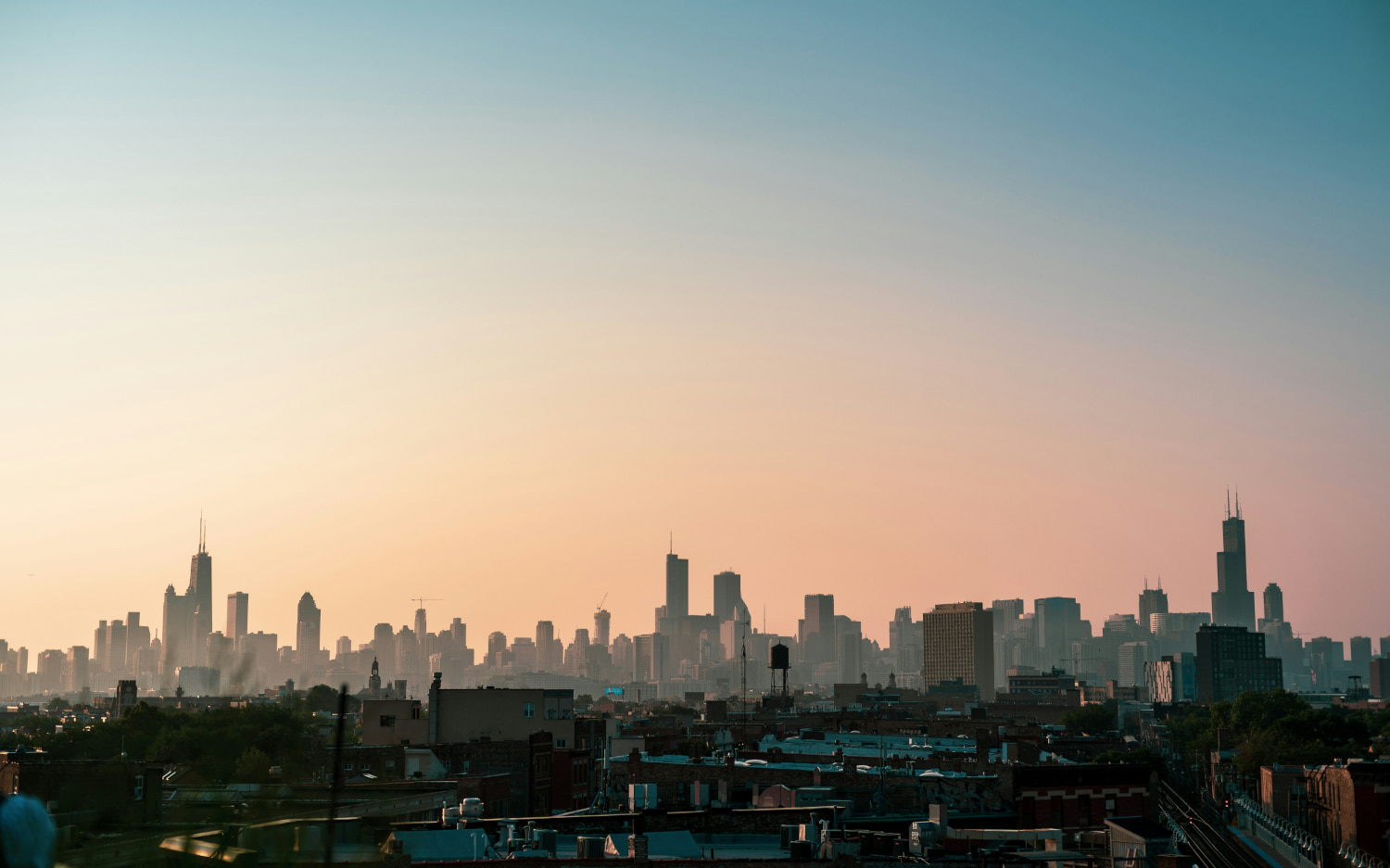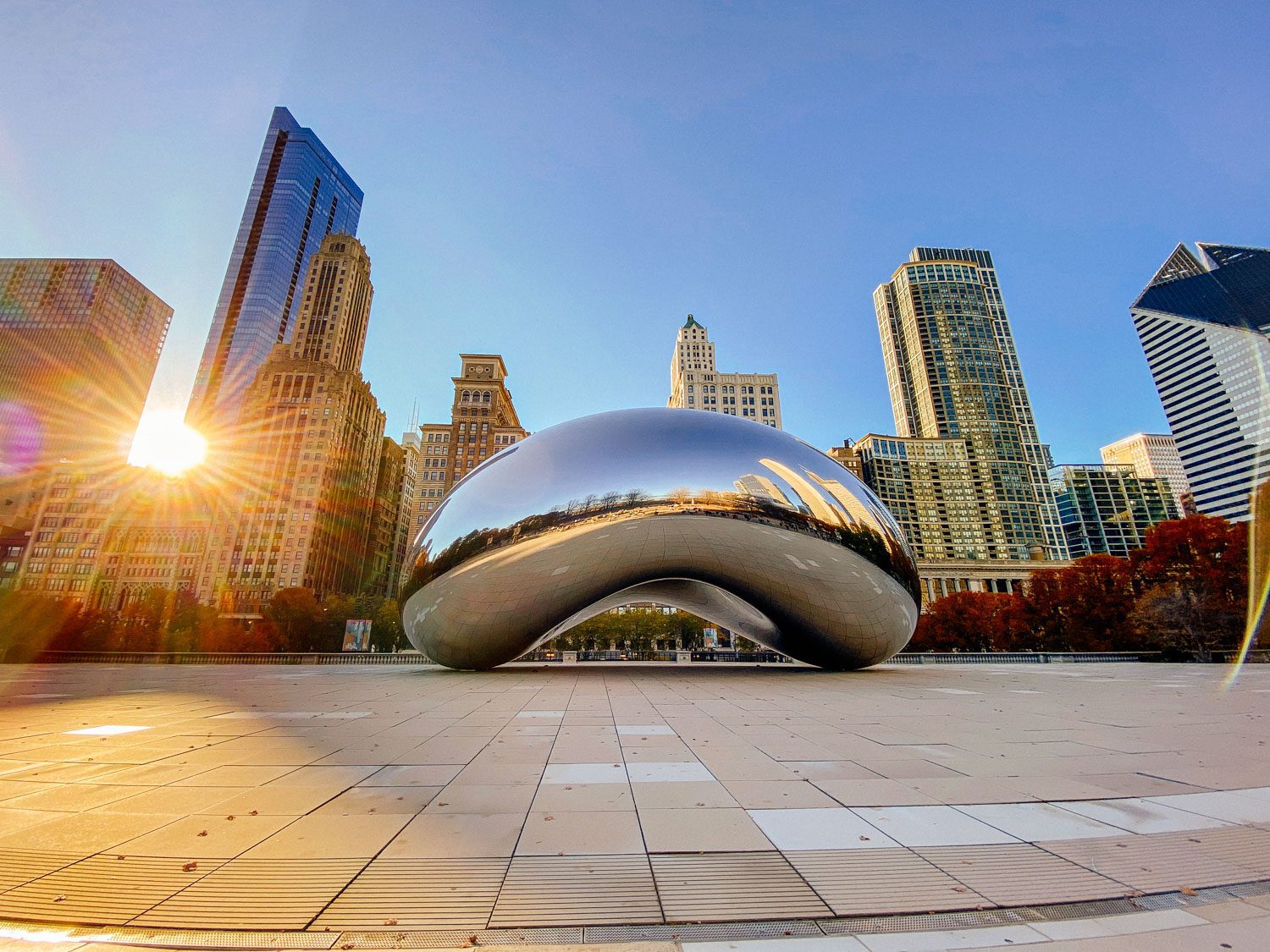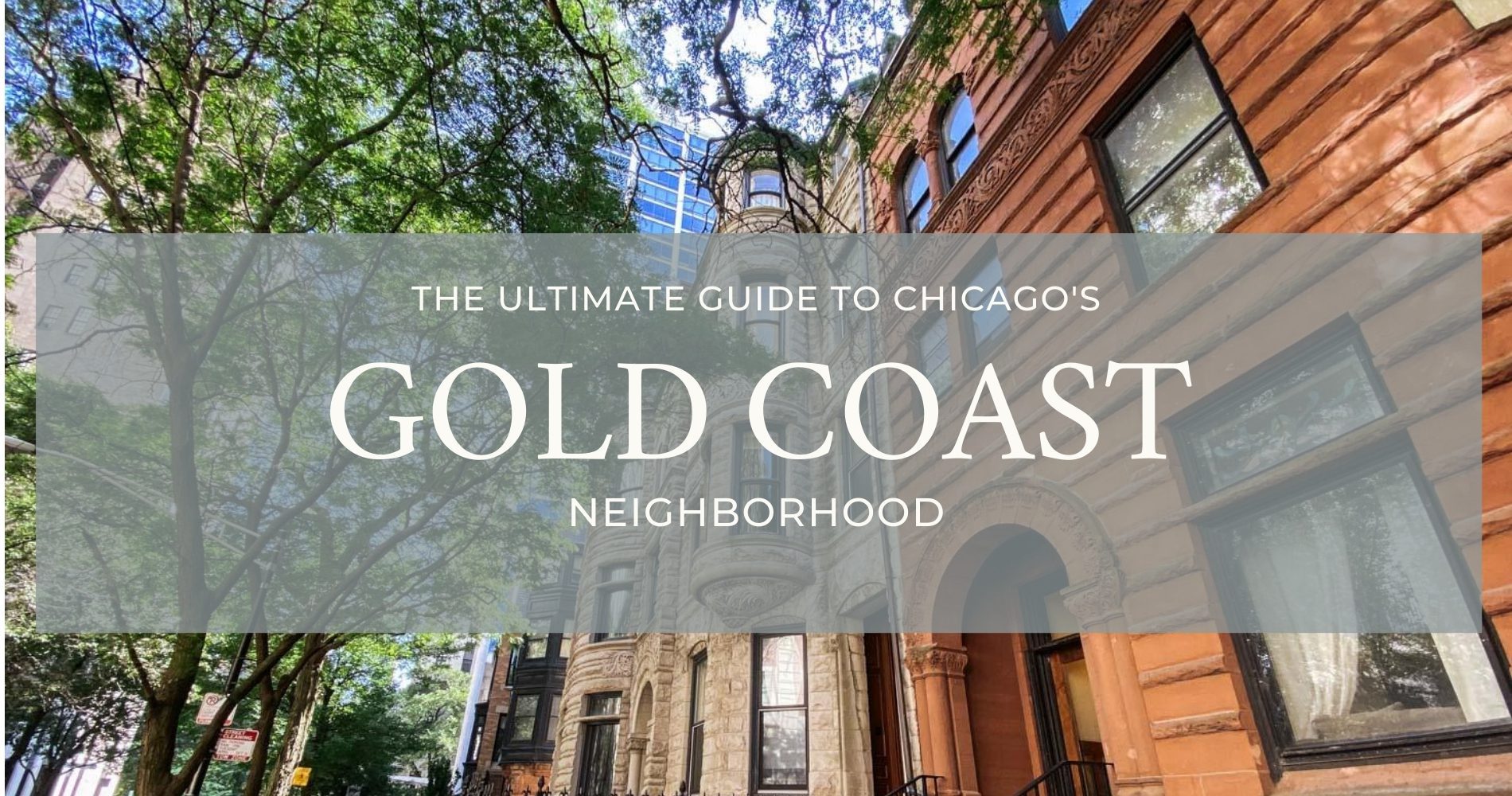The Ultimate Guide to Chicago’s Lakeshore East Neighborhood
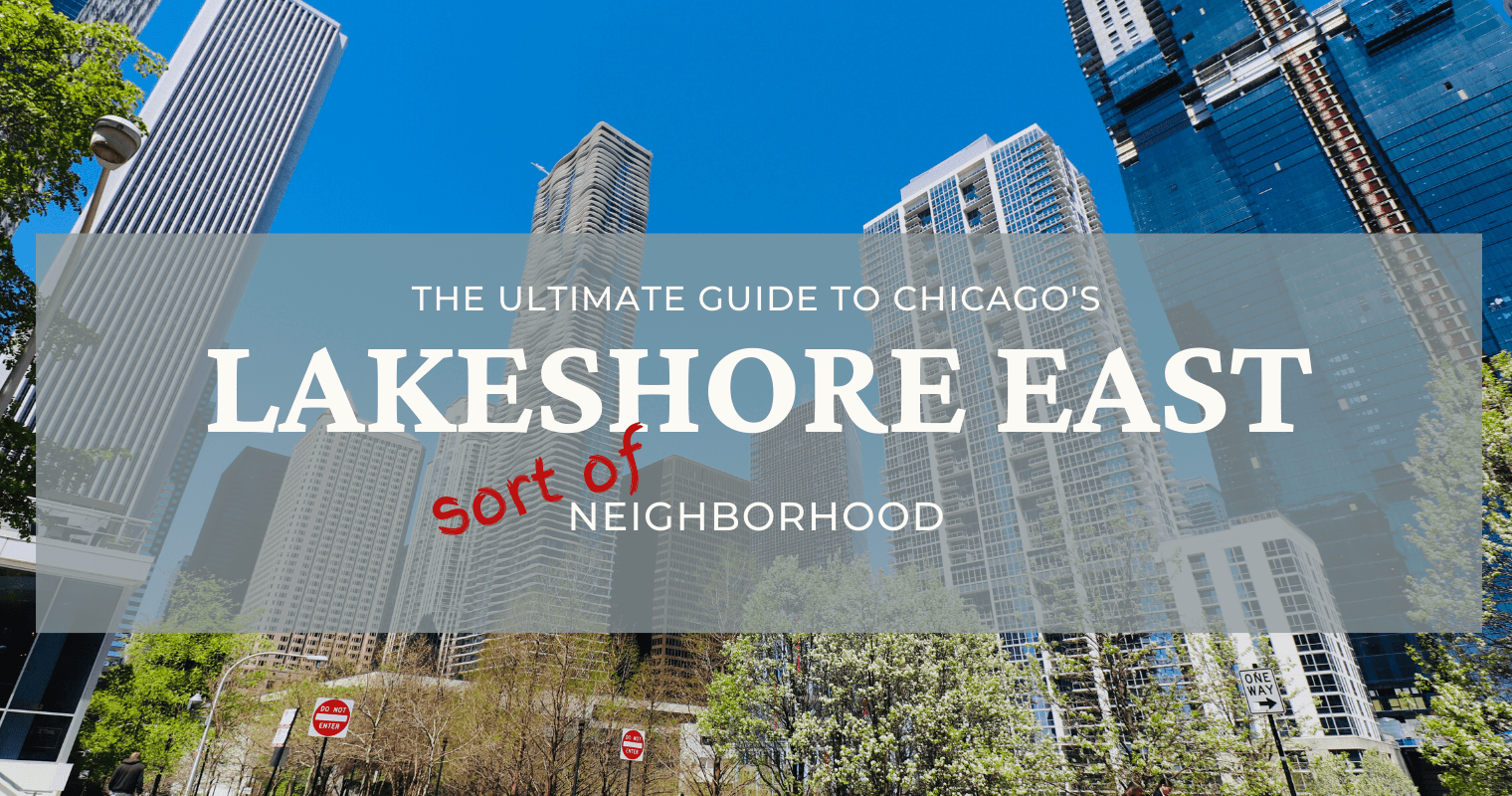
Table of Contents
- Lakeshore East Today
- Keeping Connected: The Pedway
- Close to the Riverwalk
- History of Lakeshore East
- Lakeshore East Statistics
- Lakeshore East Rental Properties
- Parks and Greenspace
- Dog-Friendly Neighborhood
- Neighborhood and Business Associations
- Universities
- Hospitals
- Schools (K-12)
- Parking
- Highway Access
- Public Transit
- Top Rated Restaurants
- Bars and Nightlife
- 5 Great Things You Need to Know About Lakeshore East
Lakeshore East is one of the best kept secrets in Chicago. Nestled up against Lake Michigan, this endeared community includes a beautiful 6-acre botanical park surrounded by tree lined streets and some of the most beautiful— and famous — high rises in the city. But, it’s also an interesting misnomer when it comes to Chicago “neighborhoods”.
I grabbed five of my friends and decided to make a day of it, exploring downtown Chicago’s most intimate lakefront neighborhood — all with the goal of learning which part of the city is actually considered Lakeshore East, and why it’s residents love to call it home. Come take a walk with me as we explore one of Chicago’s lesser known treasures, the Lakeshore East neighborhood.
Lakeshore East Today
Most neighborhoods carry some geographic disputes. Not because politicians are trying to divide them up for voting purposes (well, maybe), but because opinions vary, zoning maps are confusing and this little thing called Google keeps popping up in everything we do. But, for Lakeshore East, the boundaries are crystal clear.
Comprising only twenty-eight acres and shaped like a square donut, Lakeshore East is neither an official Chicago community (there are 77 of them), nor is it one of the more than 200 Chicago neighborhoods. It’s strictly the name of a donut-shaped, master-planned development, similarly named after “Lake Shore Drive”, its eastern border.
I’m not sure how it got spelled “Lakeshore”, however. Maybe it was just so us Chicagoans have things to talk about in the cold winter months.
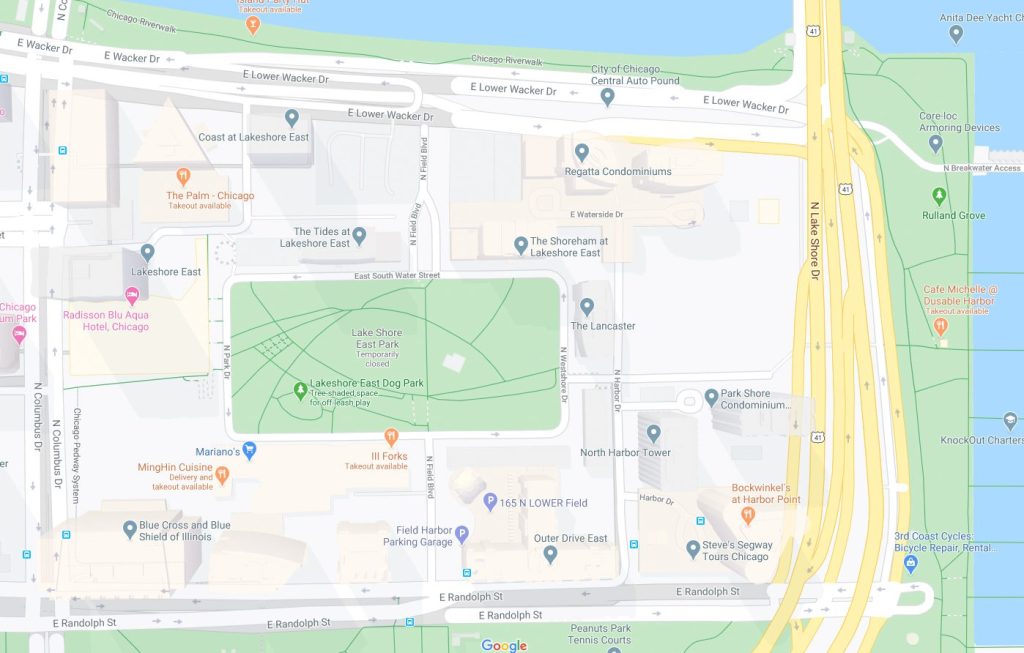
In the middle of that “donut” sits Lakeshore East Park, Chicago’s only public WiFi park and the heartbeat of this superbly laid out ‘neighborhood’. It’s also home to one of the city’s most dog friendly parks, strategically designed with a sneaky little gate system guaranteeing your pup can run wild and still be safe.
Officially, it’s called The Park at Lakeshore East. A multiple award-winning design, including Best New Park in Chicago, the Park holds in excess of 500 trees comprising 20 different varieties.
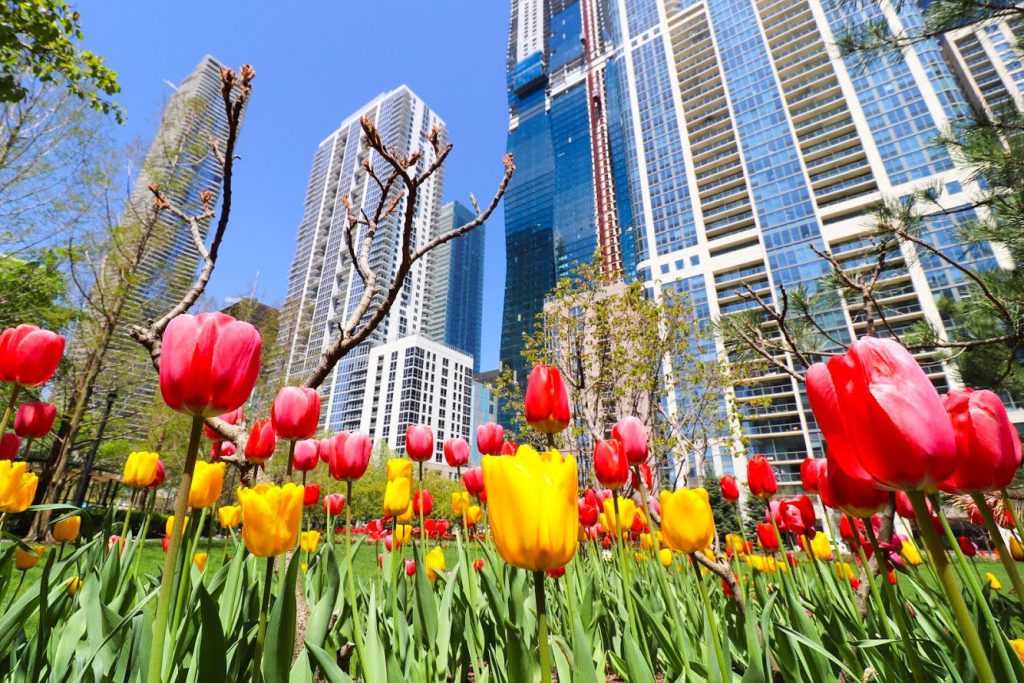
Surrounding the Park is a one-way street lined with luxury high-rise apartments, colonial looking walk-ups and a few retail necessities. The restaurant choices are limited, but spectacular, including the artsy, Mexican cuisine of Mezcalina and III Forks, the locals’ steakhouse. I’ve eaten at both of them, and if you live in Lakeshore East, don’t be surprised if you’re greeted by name.
As you venture west, Lakeshore East connects with a parcel of land originally developed as the Illinois Center. This area is dominated with high-rise commercial office buildings and luxury hotels. Think of it as the less intimate, more “Loop-like” conjoined-twin to its eastern counterpart.
Combined, the two developments make up the New East Side neighborhood, which was originally named the New Eastside. Today, Chicagoans refer to it both ways, but we’re gonna call it “New East Side” just to keep things moving along.
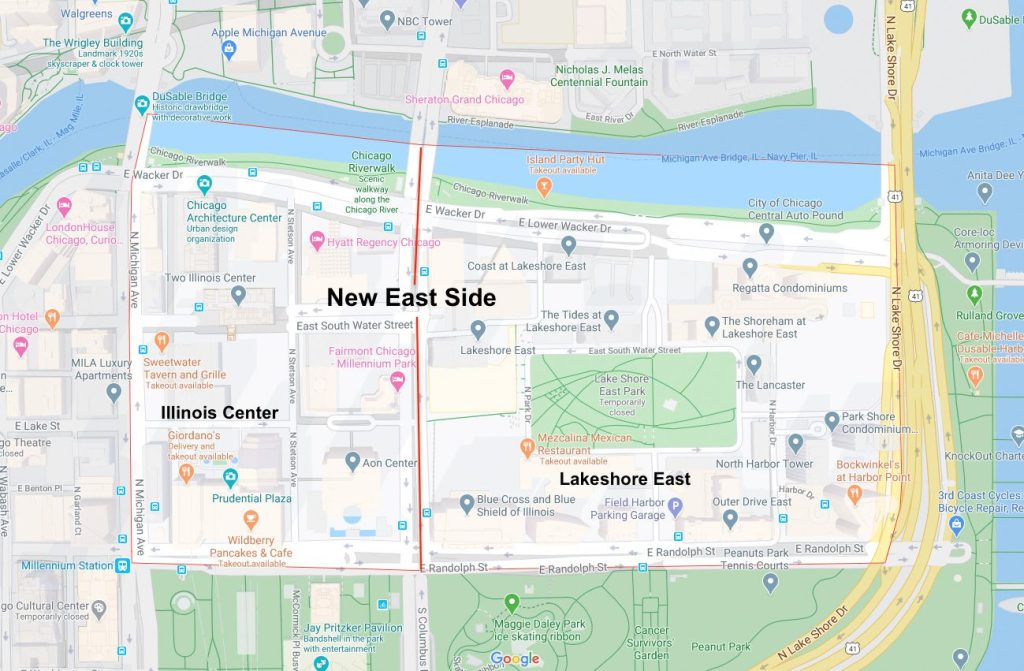
Keeping Connected: The Pedway
Close enough to the heart of the city’s business district, Lakeshore East has easy access to public transportation and is a short walk to the Loop, both above ground and below. Millennium Station, situated at the corner of Michigan Avenue and Randolph Street, is an important access point for commuters, with the Metra train system that connects surrounding suburbs.
But, Millennium Station is also important if you are staying locally. That’s because it’s one of the access points for the Chicago Pedway. If you’re unfamiliar with this particular piece of the hidden city under Chicago, it’s something you have to see for yourself.
The Pedway connects over 60 locations, primarily between The Loop and the Lakeshore East/New East Side and has a handy Pedway map that’s easy to follow. More than just an underground sidewalk, the Pedway includes everything from art installations to food joints and even a barber shop.
Close to the Riverwalk
Lakeshore East is one of the most walkable areas of downtown Chicago. The famous Chicago Riverwalk is just a short jaunt north along the Chicago River. Strolling along the Riverwalk is hands-down one of the best ways to spend a day in the city. The people-watching is incredible (and free!), the views are fabulous and the food and drinks are…well, plentiful.
You could spend an entire afternoon drinking tasty frozen cocktails, playing yard games and listening to live music at the Island Party Hut. If the water calls, why not rent a kayak or grab a fishing pole and try your luck off of a pier?
History of Lakeshore East
You’d never know, given its charm today, but Lakeshore East has had quite a troubled and colorful past. Did you know that in the 1800s, downtown Chicago was plagued with a shore-line flooding problem? People were building expensive homes along Michigan Avenue only to find themselves with a much closer lake view than they were betting on.
To help combat the flooding, the Illinois Central Railroad stepped in with the city of Chicago to create a flood break to control the water level. In exchange for controlling the floods, two acres of land, now part of Lakeshore East, was allotted as a rail yard.
The land was covered with tracks and rail office buildings until after WWII when the airspace rights were sold by the railroad and the rails were left unused and abandoned.
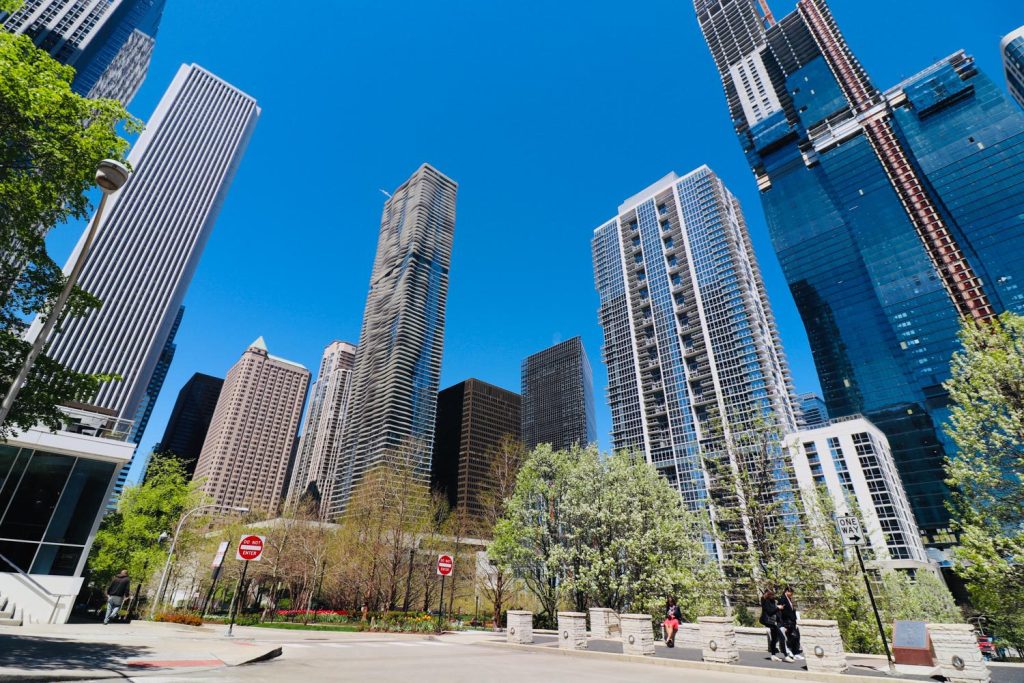
If you’ve spent any time in Chicago, you know winters can be cold. So, beginning in the early 1950’s, our Chicago planners started putting the sidewalks underground. By routing them under buildings, they created a safe, warm and convenient set of bright, open pathways for urban dwellers.
Commercial Development Begins
In 1955 the One Prudential building was erected in the southwest corner of what is now the New East Side neighborhood. The tallest building in Chicago at the time, the 2.3 million square foot office building was renamed Prudential Plaza.
Today, its tenants include the headquarters of Wilson Sporting Goods and PR firm Cision, as well as Giordano’s famous Chicago pizzeria and Wildberry Cafe, a local breakfast favorite with over 5,000 reviews!
The development of New East Side continued through the 80’s and 90’s with fourteen new buildings reaching to the sky. But nothing significant was built between 1991-2005. Wondering why? G-O-L-F!
In 1994, that abandoned rail yard was removed and developed into, yes, a 9-hole golf course. Pete Dye, the legendary golf course architect, was hired and everything. But the course only lasted a few years (maybe that land was a little too valuable). In 1998, architect Skidmore, Owings & Merrill was hired to create a plan to redevelop the area.
Over the next four years they built what’s now known as the Master Plan. This award-winning plan incorporated a triple deck roadway system, the Pedway, and still kept 40% of the area green (hello, Lakeshore East Park!). It also ushered in a mighty development boom, one that couldn’t even be stopped by the great recession.
2005: Straight Up Urban Development Begins
High rise developments are a big part of Lakeshore East’s past and present. Starting in 2005, the community began to find its identity as a residential mecca, with The Lancaster Condominiums and The Shoreham luxury apartments opening their doors.
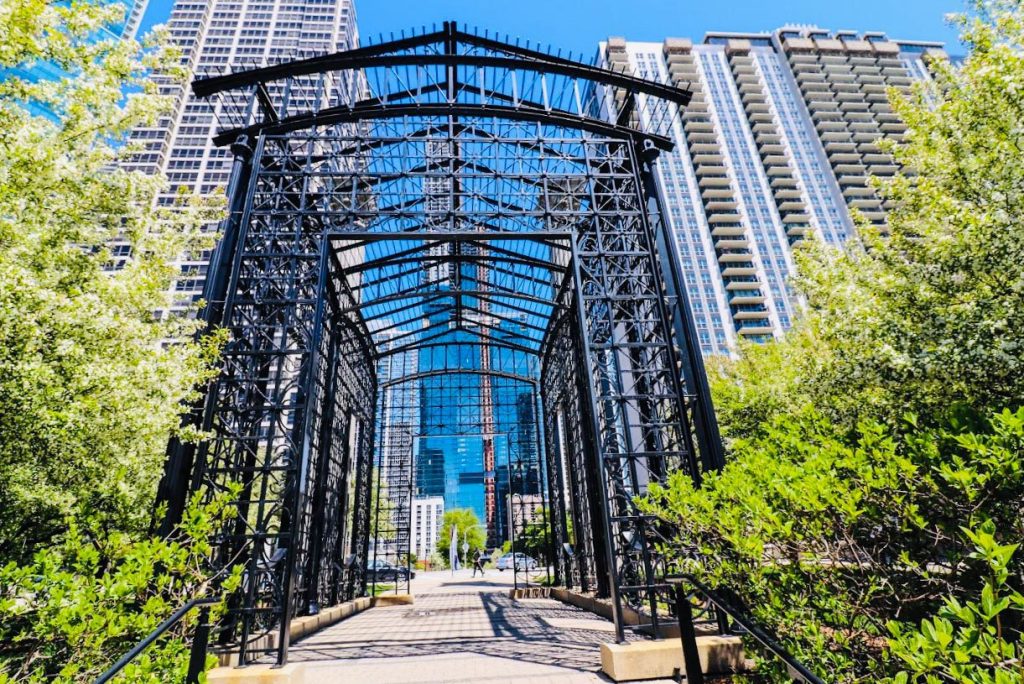
In 2009, Lakeshore East hit the international scene, when Jeanne Gang’s Aqua emerged. A triple threat of hotel, condo and luxury apartments, Aqua’s wavy balconies and undulating shape instantly became an iconic part of the Chicago skyline. It’s LEED-certified focus on sustainability and efficient use of resources though, is what wins over its lucky residents and guests.
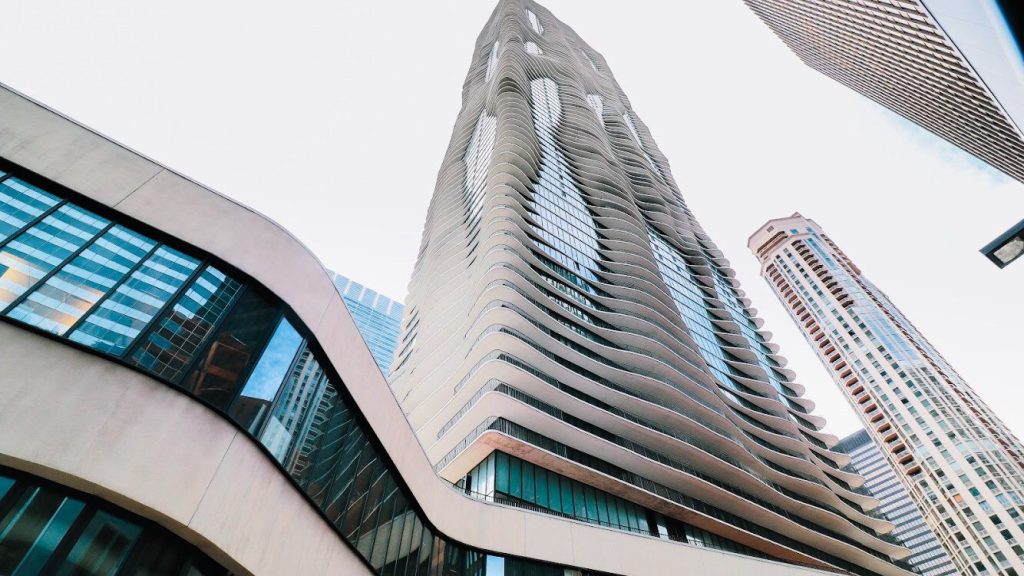
By 2010, the completion of the Blue Cross Blue Shield building anchored the southern edge of the neighborhood. Sitting due east of the famous AON building, and facing south overlooking Millennium and Grant Parks, the BCBS building has become famous for its creative use of “office lighting”.
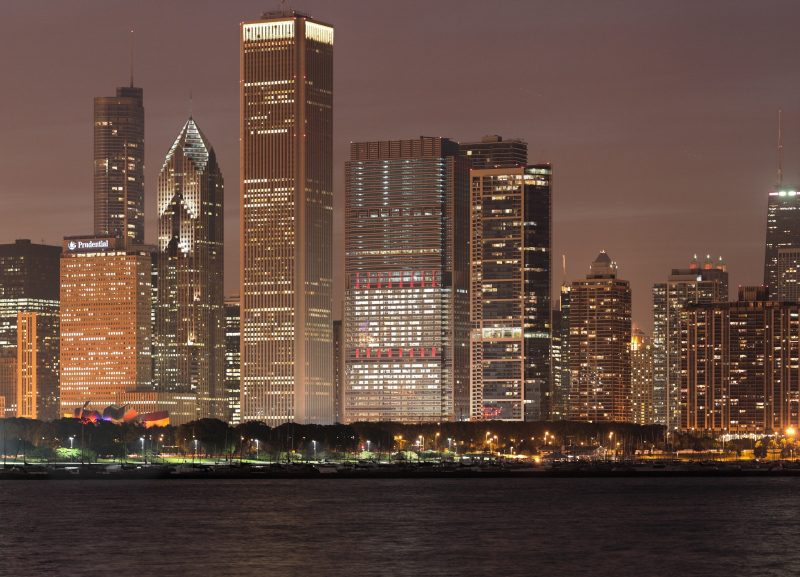
Callouts to world champs, support for vets and even pink ribbons to support breast cancer are blocked out using the lighting from office windows. Believe it or not, those letters are 5-10 stories tall!
2016: Getting the “Gang” Back Together
Take one look at Chicago’s ever changing skyline, and you’ll see that the Lakeshore East neighborhood is growing — up, up, up! After breaking ground in 2016, Studio Gang Architects put itself on the map again, this time with Vista Tower. An ambitious effort on the north end of the neighborhood earned Jeanne Gang the honor of “tallest building by a woman architect”.
When Vista opened in 2020 as the third tallest skyscraper in Chicago, I walked to the north side of the river to get perspective on this beast and — you should too! The buildings in Lakeshore East are really tall, or should I say used to be. Vista just makes them look tiny with its three massive wavy towers. Can tenants see Wisconsin from up there?
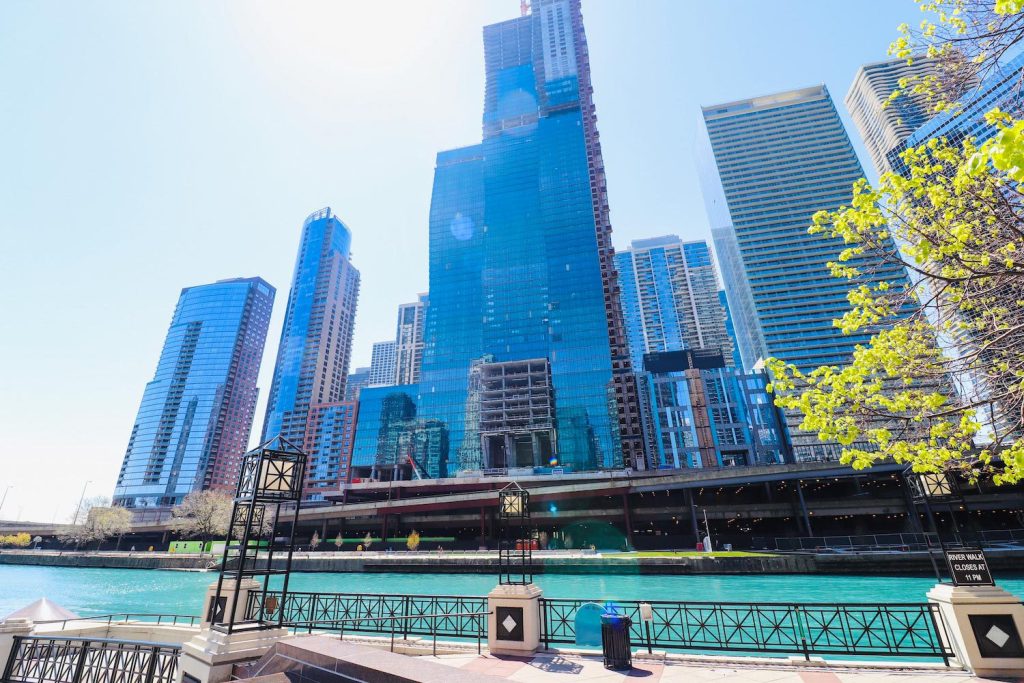
The history of Lakeshore East is fascinating, but the results are pretty simple. A near perfect, cozy community tucked away in the middle of America’s third largest city.
Lakeshore East Statistics
- Size: 0.4 square miles
- Demographics
- Population: Nearly 13,887 people live in the 60601. You will find a nearly even 50/50 split according to gender.
- Median Age of Population: 37.6
- Average Household Income: ~ $156,723 annually
- Median Household Income: ~ $110,215 annually
- Marital Status: 43.7% never married, 44.2% married. The rest are either separated, widowed, or divorced.
- Median Income for Residents Aged 25-44: ~ $104,640 annually
Lakeshore East Rental Properties
Lakeshore East is a natural fit for some of the best luxury apartments in Chicago. If you’re looking for a place to call home in this stunning neighborhood, check out Lakeshore East Apartments.
There are six luxury apartment buildings in Lakeshore East, with more scheduled as early as the summer of 2021. Here are some planned developments of luxury apartments.
- Cascade, Opens Summer 2021
- Parcel O, Preconstruction
- Parcel K/L, still in planning stage
Until then, let’s take a look at some of the luxury apartment properties available in Chicago’s Lakeshore East:
North Harbor Tower: Built in 1989, this 55-story, 600-unit luxury community offers studios, 1-bedroom, 2-bedroom, and 3-bedroom layouts. Stunning amenities include a heated indoor pool, expansive fitness center, and outdoor courtyard. Renovated in 2013-14, apartments are highlighted with custom bay windows.
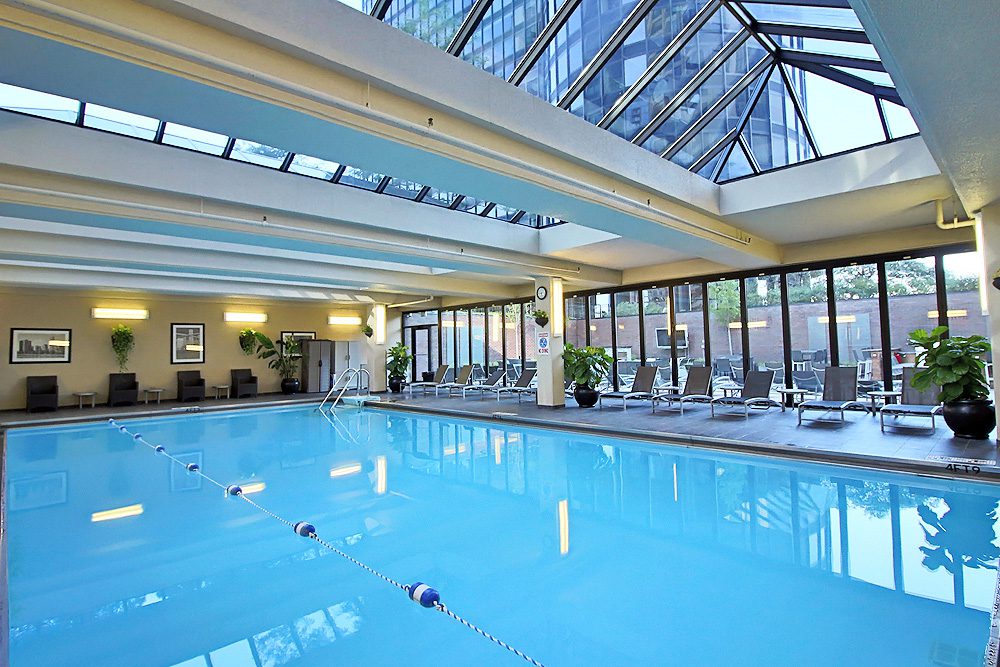
Tides: Extras abound with an entire floor dedicated to their Shore Club amenities, including a fitness center, spa and sauna, and outdoor pool. Built in 2007, its 57 stories are filled with contemporary studios, 1-bedroom, and 2-bedroom apartments.
Shoreham: Built in 2005, this 46-story and 548 unit luxury apartment is brimming with amenities such as a rooftop pool, on-site preschool, dry cleaners, and fitness center. Shoreham offers studios, 1-bedroom, and 2-bedroom layouts with maple cabinetry and floor-to-ceiling windows.
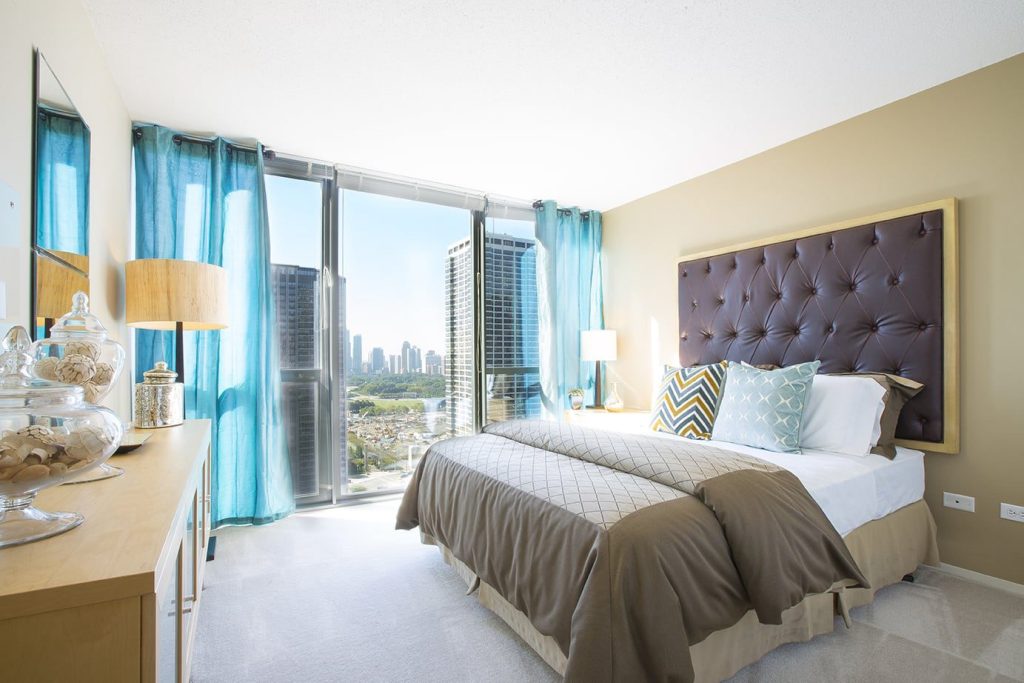
Coast: Offering studio to 3-bedroom floor plans, this pet-friendly community offers private lakeview terraces and upscale finishes. Built in 2013, its 499 units are spread over 49 stories, with amenities that include an outdoor pool, fitness center and private spa.
Aqua: This mixed-use residential high-rise offers 476 units ranging from studios to 2-bedrooms. Finishes include glass-tiled backsplashes, floor-to-ceiling windows, granite countertops, stainless steel appliances, and in-unit washer and dryer. Two full floors are dedicated to amenities, including Chicago’s largest recreational deck, equipped with an outdoor pool.
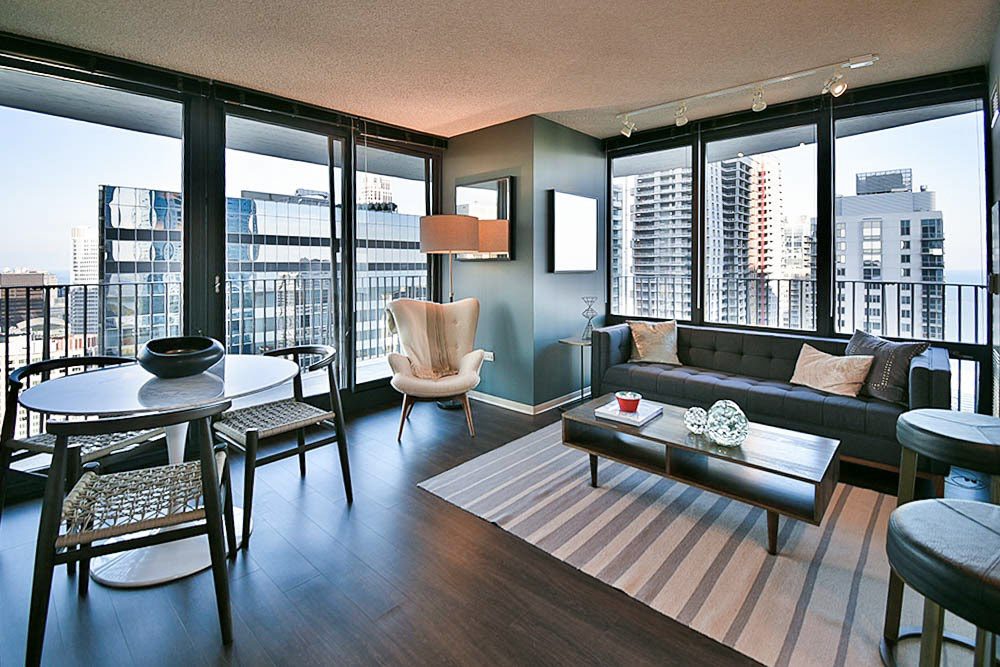
Parks and Greenspace
We’ve already sung the praises of The Park at Lakeshore East, which technically is the only park in the Lakeshore East/New East Side neighborhood. But amazingly, the neighborhood is bordered on three sides by additional Chicago Park District landmarks.
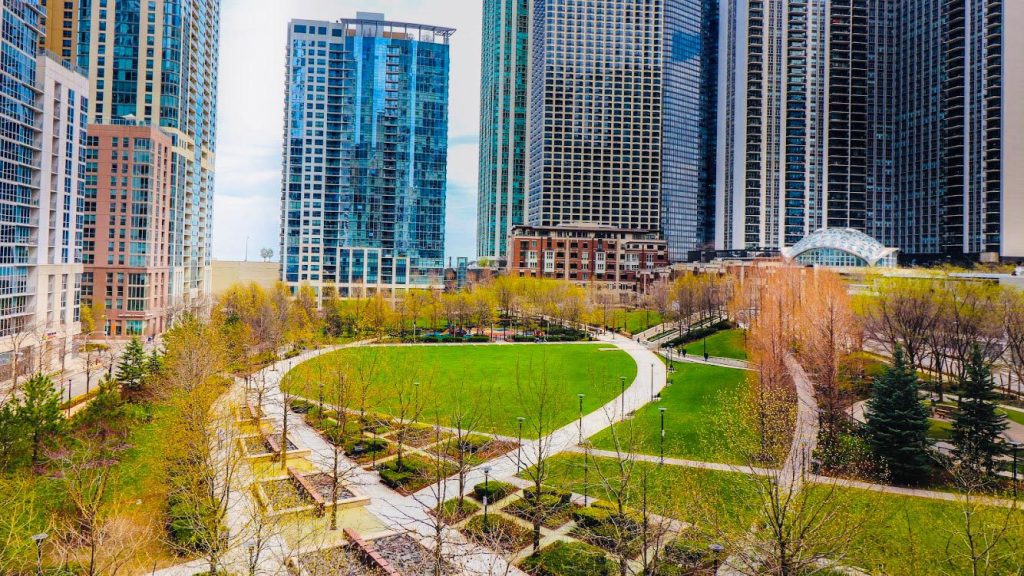
The Riverwalk East portion of the Chicago Riverwalk creates the northern border of the neighborhood. With $12m invested to upgrade the pedestrian thoroughfare, commuters can now stop, shop and grab a drink as they make their way from downtown to the Lakefront Trail.
Speaking of the Lakefront Trail, that is exactly what flanks the eastern portion of the neighborhood. Thanks to some smart urban development changes in 2018, the trail has been separated into pedestrian-friendly and bike-friendly portions. For you locals who remember dodging the mix of bikes and runners, this offers a welcome peace offering.
Finally, on the southern edge of the neighborhood lies Millenium Park. Summer here means free concerts, movies, and a chance to spread out and picnic on the grass with take-out. If that isn’t enough, tucked in next to Millennium Park is Maggie Daley Park, a sprawling 20-acre reserve of grass and trees, playgrounds, climbing walls, and in the winter, the Ice-Skating Ribbon.
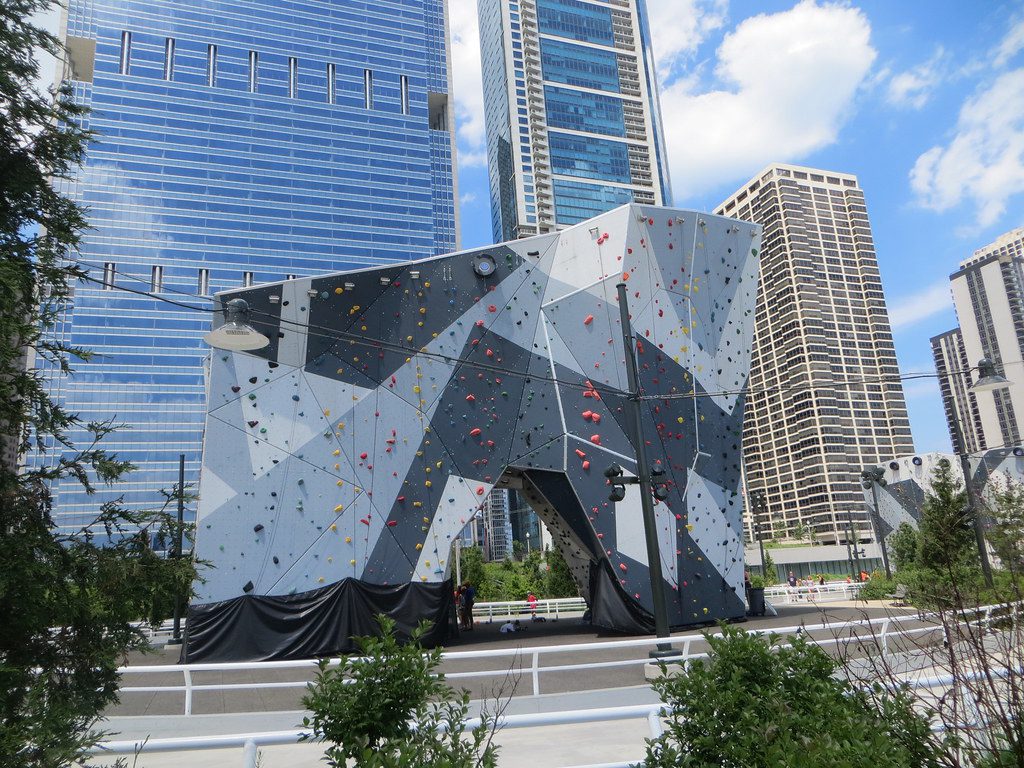
Dog-Friendly Neighborhood
Your dog is never gonna want to leave this neighborhood (but don’t worry neither will you!). Lakeshore East is definitely one of the most dog-friendly neighborhoods in Chicago. The off-leash dog park, located on the south edge of the Lakeshore East Park, is a little slice of puppy heaven.
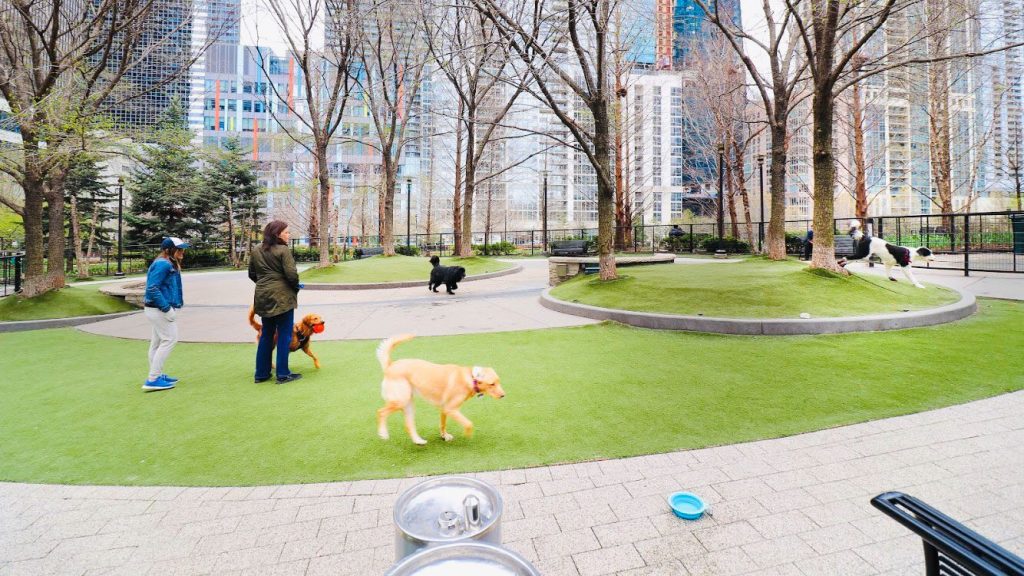
Turf lawns, a pup-approved water feature and plenty of friendly playmates will keep your dog busy for hours. You’ll appreciate the shady bench areas, double-gated enclosure and that the park is always kept tidy and clean.
Neighborhood and Business Associations
- New Eastside Association of Residents
- New Eastside News
- Loop Chamber of Commerce – they cover Lakeshore East businesses
Universities
Due to the size of Lakeshore East, there is only one university, Northwestern Medell School of Journalism, Media, and Integrated Marketing Communications within its borders. This is a constituent school of Northwestern University, offering both undergraduate and graduate education. Ranked as one of the top schools for Journalism, it’s Chicago location sits at 303 E Wacker, with direct pedway access.
There are several more universities located in the Loop and Streeterville neighborhoods; a quick 10-15 minute walk from Lakeshore East:
- Roosevelt University
- National Louis University
- Depaul University
- Columbia College
- Harold Washington College
- MacCormac College
- University of Phoenix
- Northwestern University
- Loyola University
Hospitals
The Lakeshore East/New East Side doesn’t have a hospital within its borders. The closest hospitals are Northwestern Memorial Hospital and Lurie Children’s Hospital. Each is a 15 minute walk north up Columbus Drive into Streeterville.
Schools (K-12)
Schools are limited in the neighborhood. When GEMS World Academy opened its doors in 2014, it became the only PreK-12 school in the area. The remaining vacant site in the northeast corner of the park is reserved for a future Chicago public school, but nothing has been developed recently.
Parking
Parking is limited anywhere in downtown Chicago, but most residents of Lakeshore East rely on on-site parking at $250-300/month. There are very limited metered street parking spaces available along the border of Lakeshore East, but the main options are on- or off-site parking. For those who prefer permanent off-site parking, here is a selection of great resources we use.
Highway Access
Since Lakeshore East sits up against US-41 Lakeshore Drive, this will be the main source to get you in and out of the city easily. The quickest points of access are either via Grand Ave coming from the north to access Lower Wacker Drive or Randolph Street coming from the south.
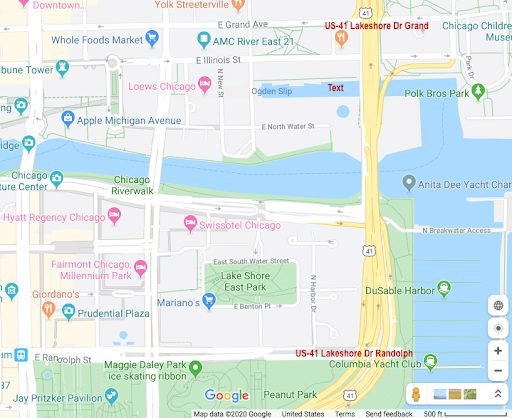
Public Transit
Easy access to public transportation and an underground Pedway make it easy for Lakeshore East residents to get around. The Pedway’s system of underground tunnels and bridges link more 40 blocks to the Loop’s Central Business District.
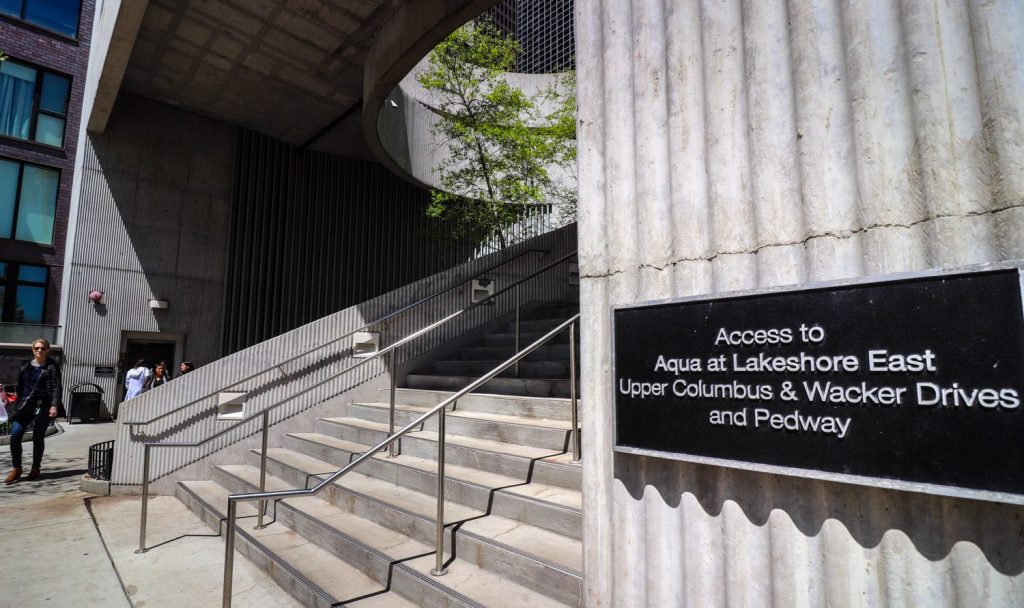
There are five points of access to Lakeshore East via the Pedway:
- Lakeshore East Park
- Aqua
- Blue Cross Blue Shield Building
- Swissotel
- 303 E Wacker
The City of Chicago has more info and a map of the Chicago Pedway System. All within a 10 -15 minute walk, you’ll find several CTA and Metra train line options, easily accessible via the Chicago Pedway System.
Let’s not forget the ease of the CTA buses that typically run north/south or east/west. There are several bus stops within a 10-15 minute walk.
It’s easiest to use the direct sites of the CTA and Metra for best routes, schedules and arrival/departure times. In addition to checking status updates, you can also set up alerts for notification directly on their site.
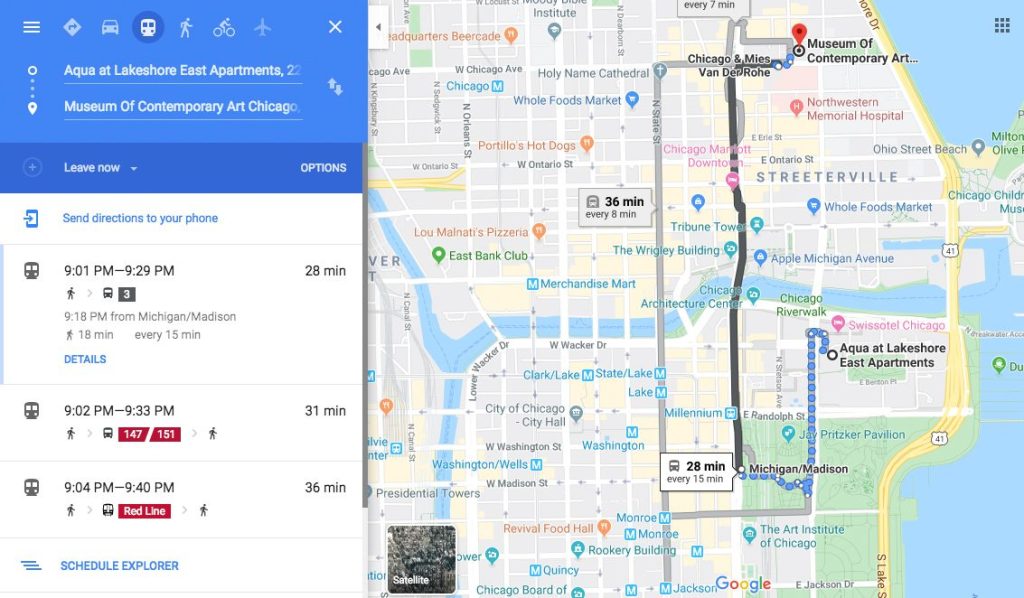
Let’s say you live at Aqua and are meeting friends at the Museum of Contemporary Art. Using Google’s direction finder, enter Aqua’s address in the top field and Museum of Contemporary Art’s address in the bottom field. Click “get directions” and Google will give you route options, including Pedway directions! If you prefer to drive, just click the car icon on the top row.
Top Rated Restaurants
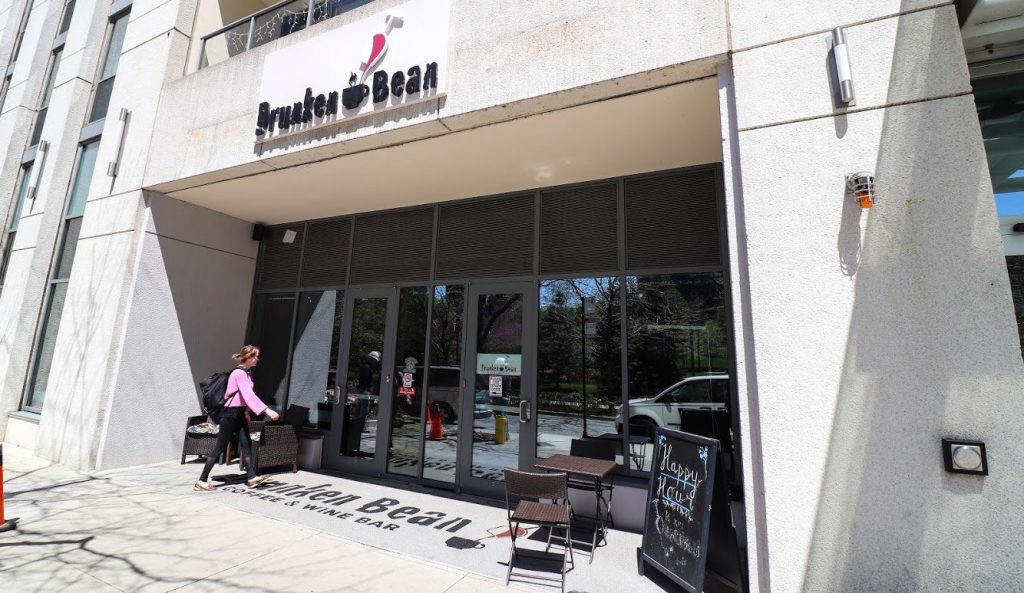
Lakeshore East may be small, but there is a concentration of good food. At the Mezcalina Mexican Restaurant, I ate some of the best tacos I’ve ever had. If you go, ask for coffee made “their own special way”. This is truly a neighborhood place, and many consider Mezcalina to be a hometown place to be.
For an upscale steak house with a mind-boggling wine selection, III Forks has a great deal of charm. And local flare. “We share in their celebrations, good times and bad. If they’re throwing a party or just coming in for a quick hamburger, they’re part of our people.”
Other places to check out include the Drunken Bean across the park, Brown Bag Seafood, and Eggy’s Café. Dining in tonight? An incredibly convenient Mariano’s Grocery anchors the southern border of the park.
Because we know restaurants can change quickly, don’t forget reliable restaurant review sites including OpenTable, Eater Chicago, Foursquare.com, TimeOut Chicago,Thrillist, and the Michelin Guide.
Bars and Nightlife
Like Chicago restaurants, bars and clubs come and go, so we want to help you help yourself to the best Lakeshore East has to offer. The bar at III Forks Steakhouse should not be missed, with one of the coolest rooftop bars around! Otherwise, try the following Google searches for up-to-date information about bars, pubs, clubs, and nightlife in Lakeshore East:
- Best bars in Lakeshore East
- Best pubs in Lakeshore East
- Best sports bars in Lakeshore East
- Best clubs in Lakeshore East
- Best entertainment in Lakeshore East
- Best movie theaters in Lakeshore East
- Best comedy in Lakeshore East
- Best dancing in Lakeshore East
5 Great Things You Need to Know About Lakeshore East
As you can tell, Lakeshore East is a wonderful Chicago neighborhood to live in. Here are five of the top reasons we believe so many call Lakeshore East home:
1. That Park! The Lakeshore East Park is one of a kind. Small, but mighty.
2. Architecture. So impressive there are actually architectural tours- by boat or foot. Check out Chicago Architecture Center’s Aqua and Lakeshore East Tour, a one-hour walking tour.
3. Chicago River and Riverwalk. One word: kayaking! Urban Kayaks is located directly on the Chicago Riverwalk, so let’s grab some beers and go!
4. Lower Wacker Drive. Those who own cars in Lakeshore East can easily access the expressway and Lake Shore Drive via lower Wacker, forgoing the need to drive through city streets.
5. Accessibility. Enjoy the perks of the Loop. Just take a short walk across Randolph Street to access The Art Institute of Chicago or enjoy a concert at Grant Park. You’re steps away from shopping on the Magnificent Mile.
And there you have it! Lakeshore East really is a wonderful “neighborhood” that has a ton to offer. Now, can we just agree to make it an official neighborhood so we can all be friends?
